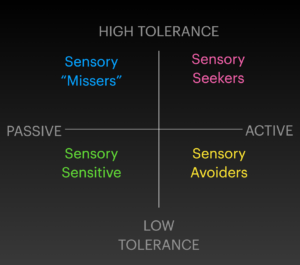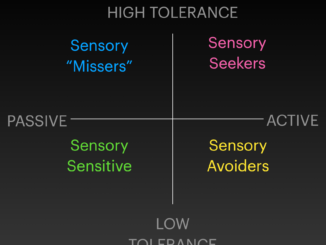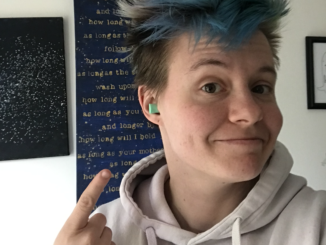“Sensory” can be a real buzzword these days, and can be a little bit tough to understand!
There are a few different ways of understanding sensory processing, but Winnie Dunn’s “four-quadrant” model is a very helpful one.
It describes how everybody in the world (not just kids, and not just people who have difficulties with sensory processing) has either a high or low tolerance for sensory input, and has either active or passive strategies about getting what they need.
Someone with high tolerance could be called someone with a “big cup”. They can tolerate a loooot of sensory input.
Someone with low tolerance could be called someone with a “little cup”. They can only handle a little bit before they’re overwhelmed.
Someone with active strategies to get what they need will do what it takes to get that need met.
Someone with passive strategies might feel very uncomfortable in their environment but might not know that they can do something to get that need met, or might not notice what exactly is making them uncomfortable.
All people fit into one of these categories. They might even fit into more than one. Someone could have an active, high tolerance for strong tastes and flavors. They eat very adventurous foods and love spicy and sour. But they might have a passive, low tolerance for sound. They don’t realize that they’re distracted at work by an annoying rattling air conditioner in the background…all they know is that they’re distracted.
Understanding sensory processing basics can help us understand how our children have reasons for doing what things they do. They can help us understand ourselves, too.

[Image description: A plus sign splits the image into four quadrants. The two axes of the plus sign are labelled “high tolerance” to “low tolerance” and “passive” to “active”. In each of the quadrants is the category corresponding to that description: in the high tolerance and active quadrant are the “sensory seekers”; in the low tolerance and active quadrant are the “sensory avoiders”, in the low tolerance and passive quadrant are the “sensory sensitive”, and in the high tolerance and passive quadrant are “sensory ‘missers'”. End description.]



